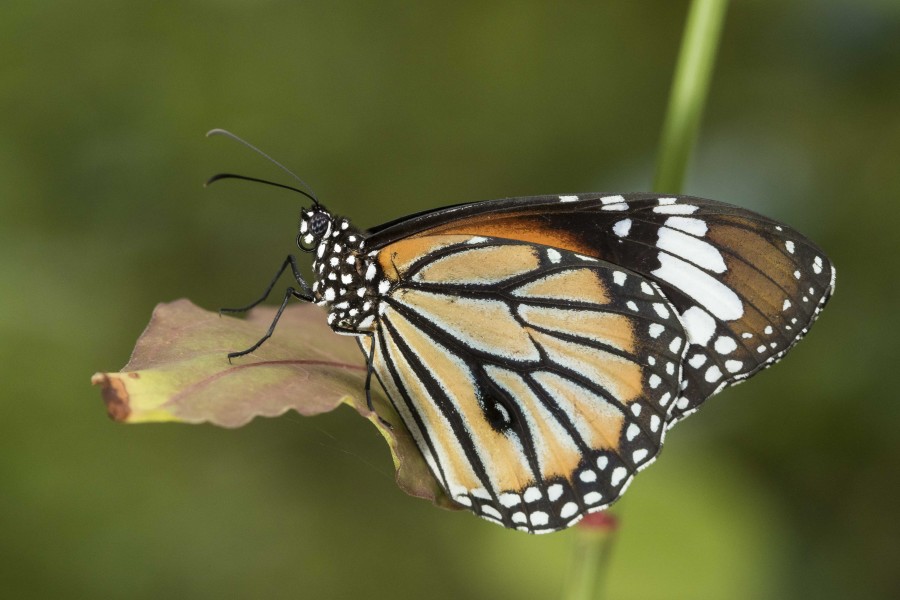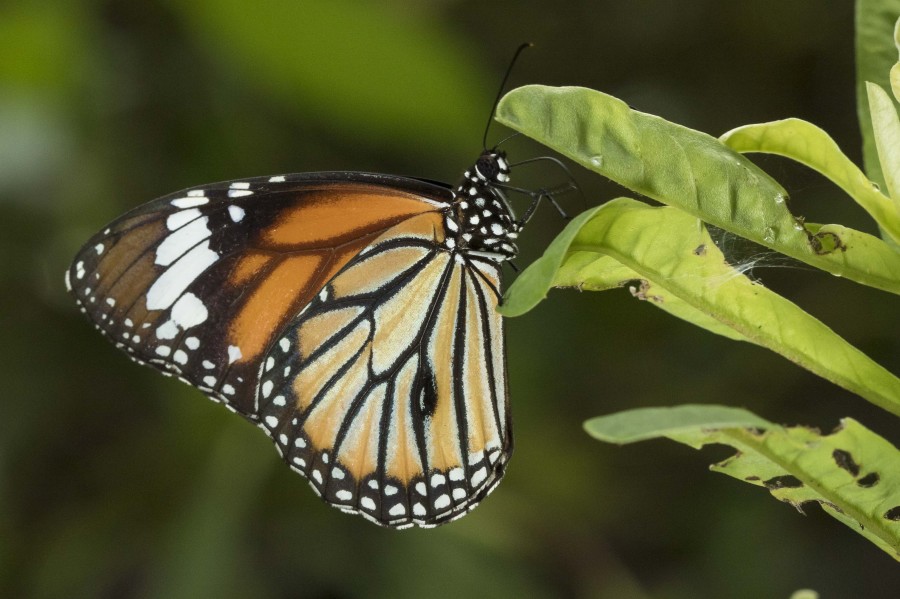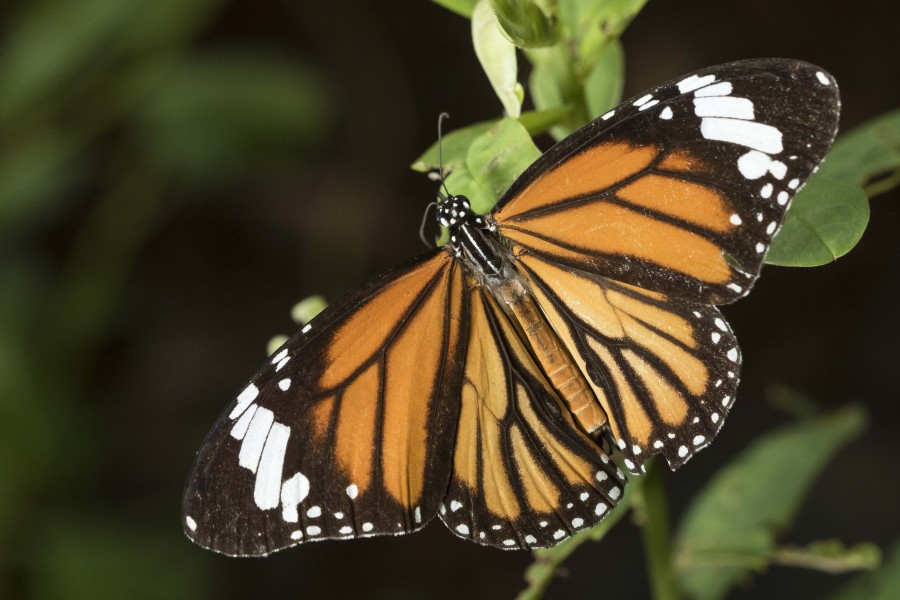This common butterfly closely resembles the infamous monarch butterfly of the Americas. Infact the Monarchs and Tigers both belong to the genus Danaus! They are all large butterflies, characterised by having orange wings with black veins, and a double row of white spots around the margins of their hindwings.
All butterflies in this subfamily are thought to be toxic or distasteful to avian predators, their bodies containing toxins derived from the larval foodplants, and often supplemented by further toxins derived from adult food sources.
Similar to the monarch butterfly the striped tiger is unpleasant to smell and taste and therefore soon released by most predators. The butterfly is tough to kill, and having been released by a predator, it usually recovers and flies off soon thereafter!
The bright colour and pattern of the striped tiger advertises its distaseful qualities to potential predators. The tamil lacewing and the leopard lacewing both mimic the striped tiger to gain impunity from predators!
The male Common Tiger has a prominent black-and-white spot on the underside of the hindwing



